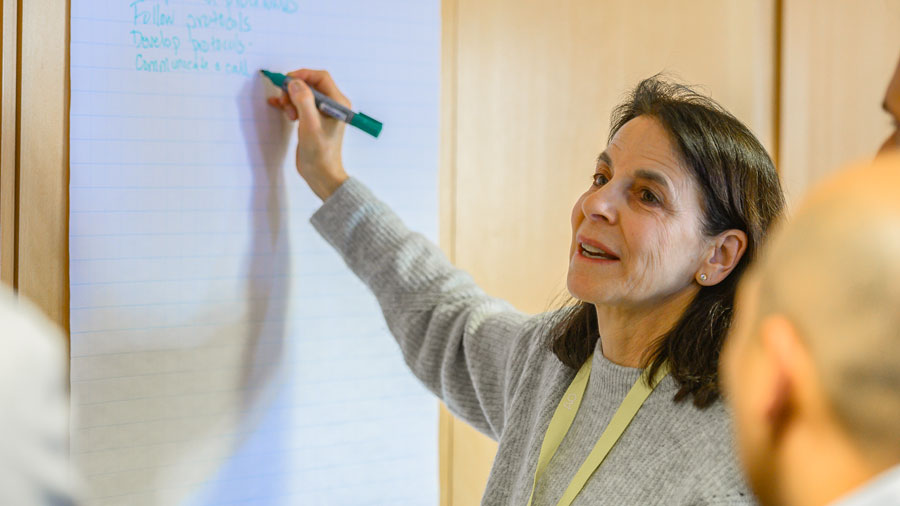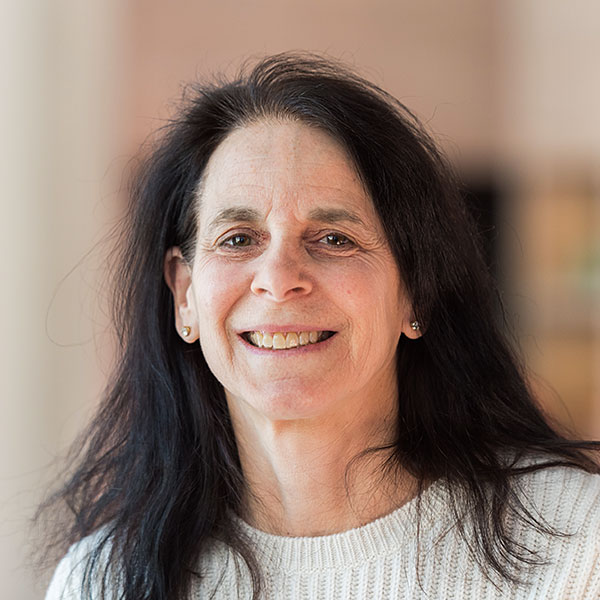Voices for change: Celebrating diversity within the AO

When Amy Kapatkin was in veterinary school in the 1970s, women represented about 7.5 percent of her class—and even fewer of her classmates were people of color. Today, she says, though about 80 percent of veterinary students are women, the profession retains a very masculine framework. The AO, with its AO Access diversity, inclusion, and mentorship initiative driven by frontline support from changemakers like Kapatkin, aims to change that—not only in veterinary surgery but across its trauma, spine, and craniomaxillofacial (CMF) clinical specialties.
“Generally, what’s valued in medicine—whether it be doctors in the human field or veterinary medicine—are very male characteristics. So, despite the fact that women have gone into the profession, the fact that people say they value how women care for and treat patients, and the fact that the team approach theoretically is valued, the reality is that these things aren’t really quite valued yet,” said Kapatkin, a professor in the University of California, Davis (UC Davis) School of Veterinary Medicine’s Department of Surgical and Radiological Sciences, the diversity and inclusion representative to the AO Access Steering Committee. “Instead, the profession holds onto beliefs like, ‘You need to be strong in decision-making and show no emotions.’ There’s a disconnect there. True integration of women and underrepresented groups has not really occurred yet. But the AO has made a huge push for awareness.”
Still, she says, that push is relatively new.
“It was in December 2018 that I first presented [the need for greater diversity, inclusion, and mentorship] to the AO Foundation Board and staff. That’s really not very long ago,” Kapatkin emphasized. “Nothing has a more male schema than orthopedic surgery—nothing. We can see that. In medical schools in the United States, 56 percent of the classes are women and yet, when you look at the women in trauma surgery for example, only 12–14 percent of residents are women. Spine is even worse, at about 6 percent.”
In orthopedic surgery, Kapatkin said, the subspecialties are very gendered, and this also applies to ethnicity.
“Other subspecialties, like hand and CMF surgery, are more diverse than trauma or spine. Once again, it’s the schema. It’s the idea of, ‘This is who you should be,’” she said.
‘This isn’t about quotas’
That framework extends to learners as well.
“Learners are going to engage where they feel included. If you talk to some of our colleagues from underrepresented groups, they will tell you that they chose their internships, residencies, and fellowship by seeing who the faculty, previous residents, and fellows are. They don’t want to stand out. They don’t want to be the token representative of their underrepresented group,” Kapatkin pointed out.
Much must change for the world of surgery, including the AO, to become truly diverse and inclusive—and fair when it comes to opportunities to enter the organization and advance through its ranks.
“Step one is always recognizing that there’s a problem. Step two is asking why and then working on changing perceptions and instituting ways of making change,” she said.

“This isn’t about quotas. AO Access is about recognizing that people from underrepresented groups are just as good as anyone else and maybe better. So, this is about changing the AO culture specifically and the broader culture in surgery.”
Amy Kapatkin
Plenty of work to do
Kapatkin knows what she’s talking about. In 2019, she became the first woman and the first AO VET member elected president of AO North America (AO NA). She finished that term and is now the chairperson of the AO NA Board of Directors. She is proud of veterinary medicine’s diversity but even that specialty has work to do, Kapatkin said.
“We were the first medical profession to become more diverse in gender, yet despite this fact, in North America—which has the highest percentage of women faculty—only 30 percent of the faculty are women. And if you go to a course, you’ll see 25 percent women in the course,” Kapatkin said.
Diversity and inclusion are important to Kapatkin because she cares about the surgical specialties and the patients they serve.
“I don’t believe professions—or other groups of people—do well when you care only about yourself. I’ve struggled and I’m not one of those people who believe that the next generation has to struggle to show that they really want a career,” she said. “I truly believe that the medical professions are heading for a disaster if they don’t become more diverse and inclusive. As I age, I feel like I don’t want only male orthopedic surgeons because that means you’re missing 50 percent of the top talent. There’s plenty of evidence that diverse groups are going to advance medicine faster and better. Our care for patients—including veterinary patients—benefits from diverse opinions and beliefs. Our goal is to advance the profession and to do that, it’s important to talk about these topics.”
An AO culture change
Kapatkin said she is far from alone in her passion for shaping a more inclusive and diverse AO. For example, she cites the leadership of AO Past President Robert McGuire who championed inclusion, diversity, and mentorship in 2019, leading to the 2020 launch of AO Access.
“We had a leader in Bob, who believed that this had to be done and that’s important because as you can imagine, there are some who believed that diversity and inclusion could just ‘naturally’ happen in the AO with no special effort. But there’s enough evidence that it could take 100 years to happen ‘naturally,’” said Kapatkin. “And underlying this as a belief that ‘There are no women leaders or leaders from underrepresented groups.’ My response to that is, ‘No, they are here. You just don’t realize they’re here.’”

“There’s plenty of evidence that diverse groups are going to advance medicine faster and better. Our care for patients—including veterinary patients—benefits from diverse opinions and beliefs.”
Amy Kapatkin
The AO Access Journey
Supporting those future AO leaders in their entry into and advancement through the AO are the free learning modules that are part of the AO Access Journey.
“The AO offers great courses and can teach many technical skills, but how do you learn how to work in a group or lead or teach a group? You may find an individual sponsor or coach, but they are usually focused on developing your technical or research skills,” Kapatkin said. “How do you relate to your patients? How do you get people to trust you and want to follow you? These are things no one teaches us in medical school. But the AO Access Journey modules address these topics and were created as evidence-based tools. I learn something every time I engage in one of the modules.”
What will the ultimate success of AO Access look like—and how will it be measured? Kapatkin broke it down into simple terms.
“The measure of our success will be the day we see a lot more people of color and women in leadership roles. It will be the day that there’s no more of this feeling that if someone else is succeeding, then I’m not succeeding. When the group succeeds, everyone succeeds—and the ultimate beneficiaries will be our patients, because patients are at the heart of the AO mission.”
You might also be interested in:
- Reading the complete voices for change series
- Joining the AO Access Mentorship Program
- Listening to the AO Access to success podcast

